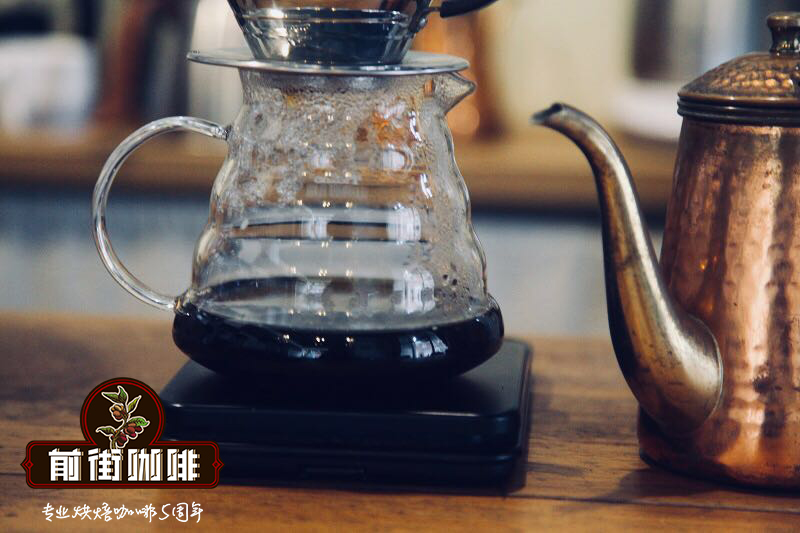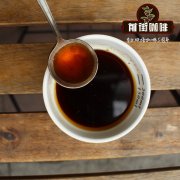Introduction to the flavor characteristics of coffee beans in the New Oriental region of Guatemala hand-impact siphon pressure cooking

For professional baristas, please follow the coffee workshop (Wechat official account cafe_style)
This unique region, which greets the first dawn of the country every day, is the easternmost producing area of Guatemala. New Oriental is one of the seven producing areas of boutique coffee defined by the Guatemalan Coffee Association (Anacafe) in 1980, which is defined as the land between Barberena, Jutiapa and Chiquimula.
Since 1950, coffee in this area has been grown almost entirely by small producers. Now, what used to be one of the poorest and most isolated regions of Guatemala is vibrant and growing, and almost every farm on the mountain has become a coffee-producing unit. Most of the coffee in the New Oriental region comes from small family-owned estates, which also grow other basic crops as daily food. This producing area is rapidly becoming more and more famous among coffee connoisseurs, and their demand for this coffee is increasing year by year. As a result, every farm on the mountain has shifted to growing coffee, replacing other crops as the main source of products and income.
Located in the area of frequent volcanic activity in the past, the climate of the New Oriental producing area is cloudy and rainy. The soil here is made up of metamorphic rocks that evenly mix many minerals, which is different from other volcanic soil producing areas.
Qianjie recommended cooking parameters:
Hand punch: V60 filter cup small Fuji R440 grinding 3.5, water temperature about 90 degrees
The recommended grinding degree of normal pressure is 4 and the water temperature is 90 ℃.
The recommended siphon grinding degree is 4, and the water temperature is 90 ℃ ~ 91 ℃.
The pressure grinding degree of Philharmonic is recommended to be 3.5, and the water temperature is 90 ℃.
Important Notice :
前街咖啡 FrontStreet Coffee has moved to new addredd:
FrontStreet Coffee Address: 315,Donghua East Road,GuangZhou
Tel:020 38364473
- Prev

Introduction of Saint Isabel Manor in Guatemala
For professional baristas, please follow the Coffee Workshop (Wechat official account cafe_style). The actual full name of St. Isabel Manor is St. Isabel Cobain Manor. The Koban mentioned in the full name is the Koban rainforest in central Guatemala, and the varieties are Kaddura (Caturra), Catuai (Kaduai) and San Cristobal Verapaz. St. Isabel Manor won in 2012.
- Next

Chicua Manor Chiqua, Guatemala introduces the flavor characteristics of Guatemalan coffee
Professional baristas follow the Coffee Workshop (official Wechat account cafe_style) Chicua is a young manor situated on a volcanic hillside overlooking the magnificent Attilan Lake, a hilly paradise formed by magma from the centuries-old eruption of nearby volcanoes Atitland and San Pedro. The word Qigua Chicua comes from the Mayan Jiche language, which means there are
Related
- Does Rose Summer choose Blue, Green or Red? Detailed explanation of Rose Summer Coffee plots and Classification in Panamanian Jade Manor
- What is the difference between the origin, producing area, processing plant, cooperative and manor of coffee beans?
- How fine does the espresso powder fit? how to grind the espresso?
- Sca coffee roasting degree color card coffee roasting degree 8 roasting color values what do you mean?
- The practice of lattes: how to make lattes at home
- Introduction to Indonesian Fine Coffee beans-- Java Coffee producing area of Indonesian Arabica Coffee
- How much will the flavor of light and medium roasted rose summer be expressed? What baking level is rose summer suitable for?
- Introduction to the characteristics of washing, sun-drying or wet-planing coffee commonly used in Mantenin, Indonesia
- Price characteristics of Arabica Coffee Bean Starbucks introduction to Manning Coffee Bean Taste producing area Variety Manor
- What is the authentic Yega flavor? What are the flavor characteristics of the really excellent Yejasuffi coffee beans?

